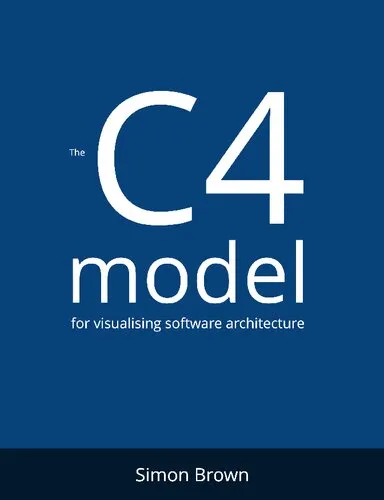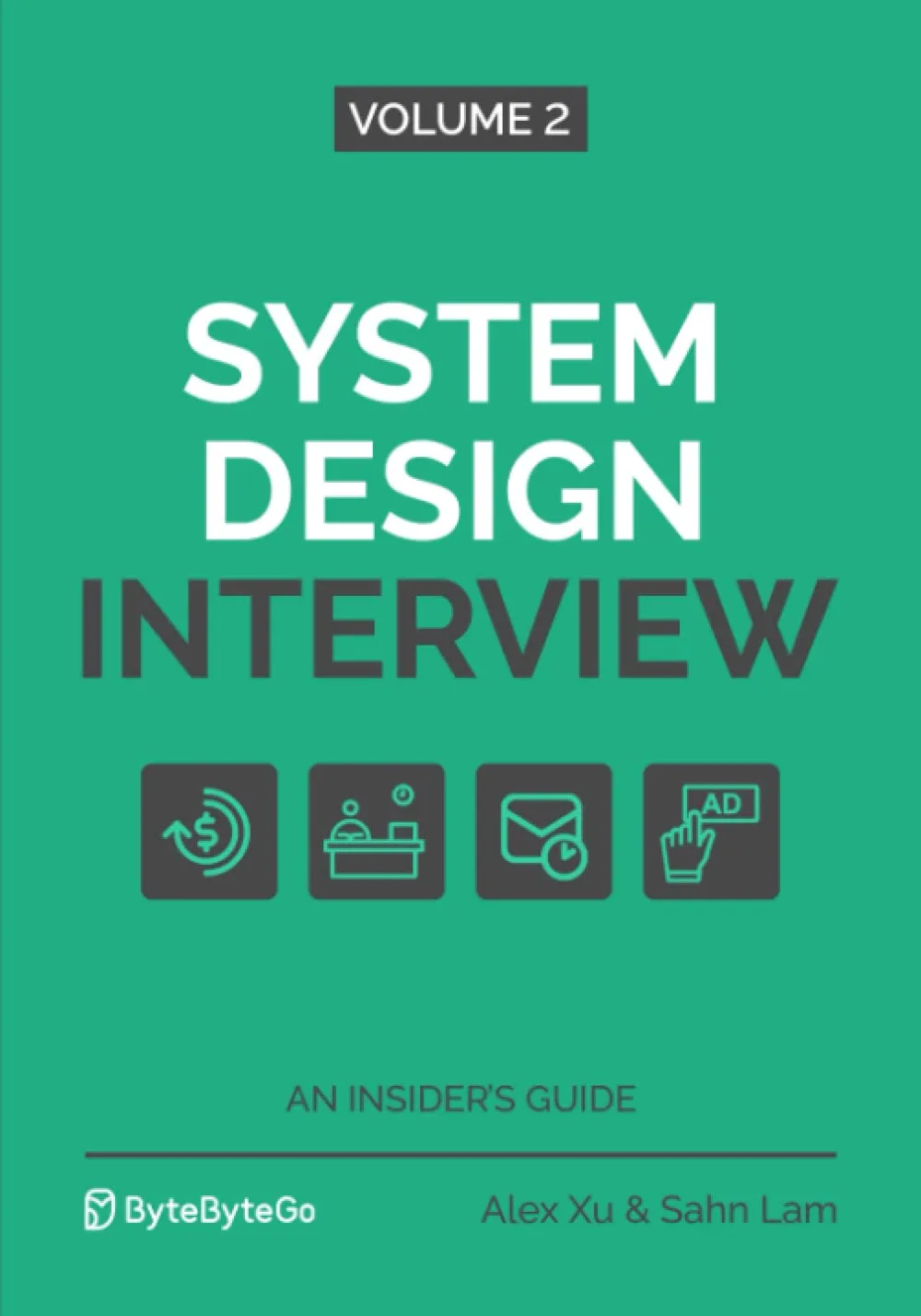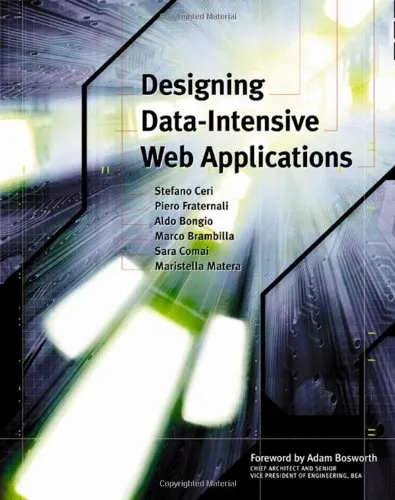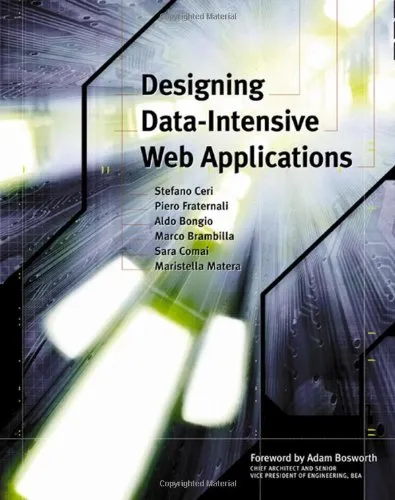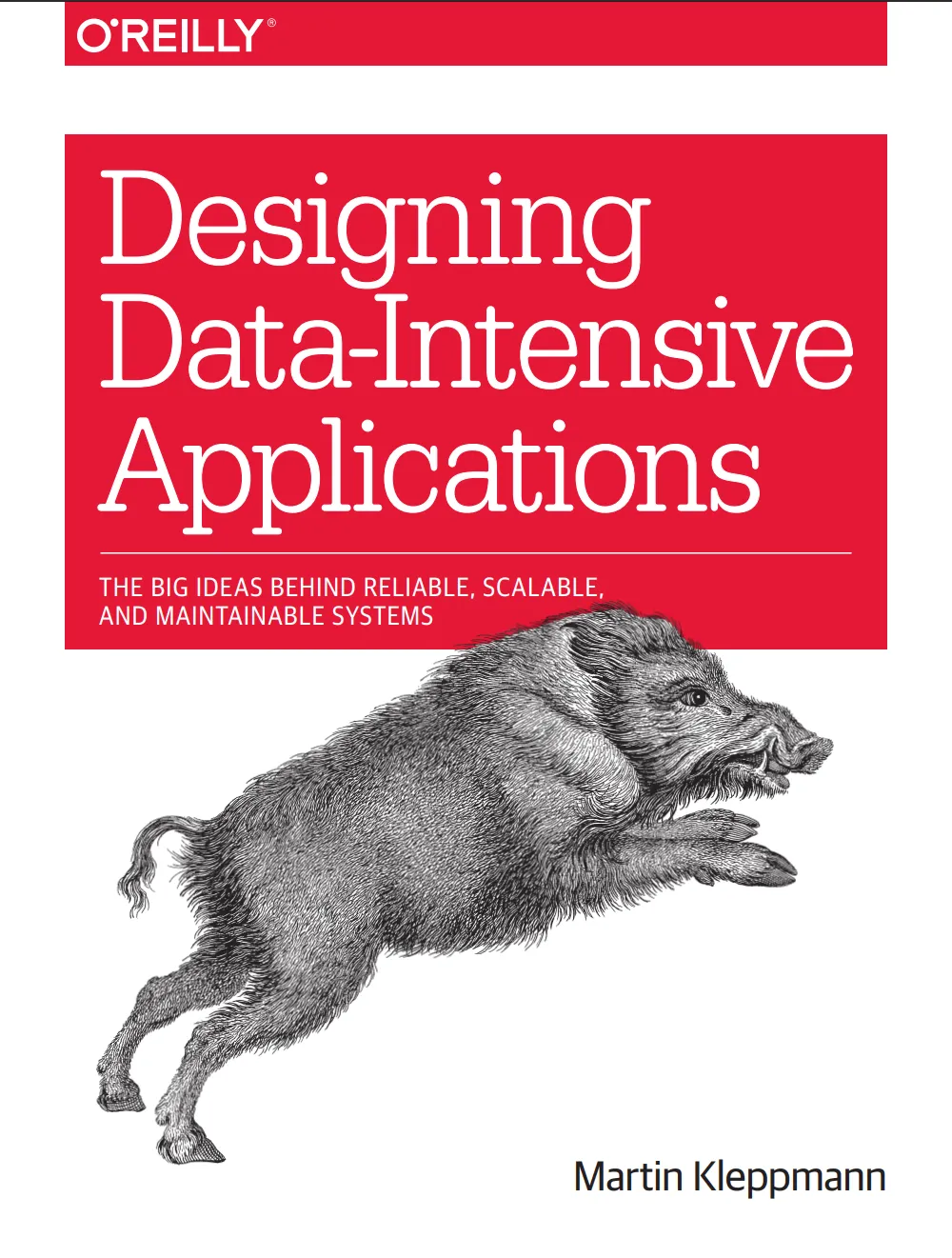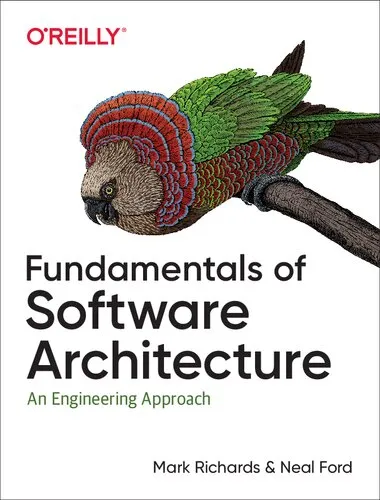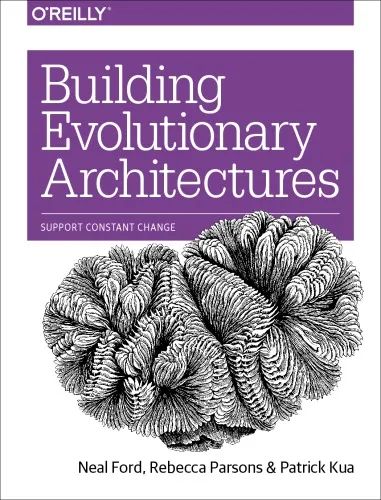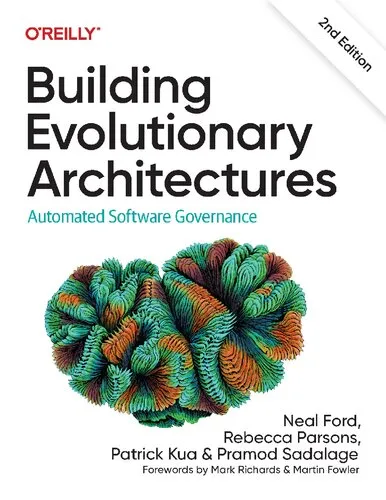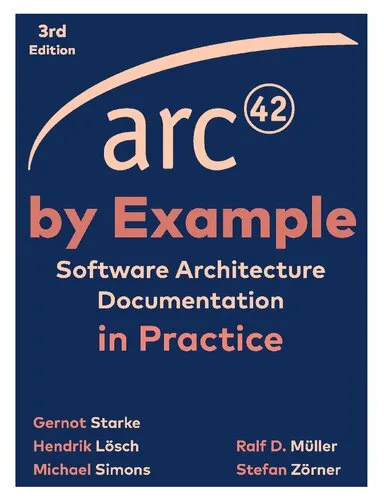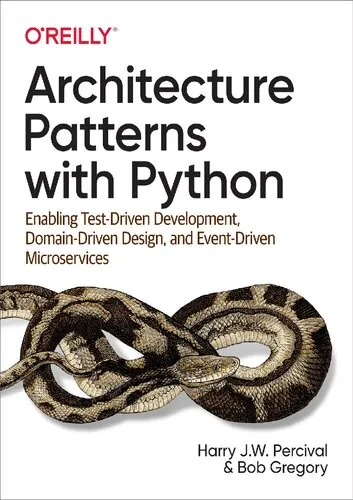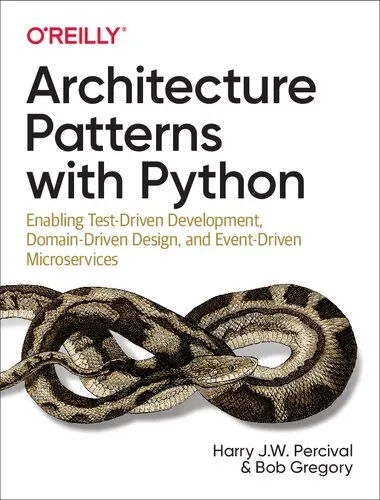The C4 model for visualising software architecture
4.7
بر اساس نظر کاربران

شما میتونید سوالاتتون در باره کتاب رو از هوش مصنوعیش بعد از ورود بپرسید
هر دانلود یا پرسش از هوش مصنوعی 2 امتیاز لازم دارد، برای بدست آوردن امتیاز رایگان، به صفحه ی راهنمای امتیازات سر بزنید و یک سری کار ارزشمند انجام بدینکتاب های مرتبط:
Persian Summary
معرفی کتاب
کتاب 'The C4 model for visualising software architecture' نوشته سیمون براون به عنوان یک راهنمای جامع و کاربردی برای مهندسان نرمافزار ارائه شده است که به دنبال برقراری ارتباط بهتر و موثرتر در زمینه طراحی معماری نرمافزار هستند.
خلاصهای جامع از کتاب
کتاب 'The C4 model for visualising software architecture' یک رویکرد ساده و در عین حال قدرتمند برای تصویریسازی معماری نرمافزار ارائه میدهد. این مدل با تمرکز بر روی سادگی و قابل فهم بودن، مشکلات رایجی مانند پیچیدگی بیش از حد در دیاگرامها و یا عدم توانایی در ارائه چشمانداز کلان را برطرف میکند. مدل C4 شامل چهار سطح متفاوت است:
- Context: به تصویر کشیدن سامانه در بستر محیط آن.
- Container: شناسایی و نمایش اجزای مستقل و نحوه تعامل آنها.
- Component: جزییات داخلی هر Container و روابط میان مؤلفهها.
- Code: رسم دقیق بر روی کلاسها و برنامههای سطح پایین.
این رویکرد چهار سطحی به مهندسان اجازه میدهد تا به راحتی از سطح بالای انتزاع به جزئیات دقیقتر جراحی کنند، و بدین ترتیب توانایی تفهیم مفاهیم پیچیده را بهبود بخشند.
نکات کلیدی
از نکات کلیدی کتاب میتوان به موارد زیر اشاره کرد:
- رویکرد C4 یکی از بهترین راهها برای پل زدن بین تفکر مفهومی و جزییات فنی است.
- سادگی در ارائه میتواند به فهم بهتر و مشارکت موثرتر اعضای تیم منجر شود.
- مستندسازی مناسب و به روز، نقش حیاتی در حفظ سلامت طولانی مدت یک سامانه دارد.
جملات معروف از کتاب
"سادهسازی پیچیدگی در معماری نرمافزار، نه تنها هنری نیست، بلکه نیازی حیاتی است." - سیمون براون
"هدف از طراحی معماری، ایجاد زبانی مشترک میان تیمهای توسعه و ذینفعان است." - سیمون براون
اهمیت این کتاب
کتاب 'The C4 model for visualising software architecture' در جوامع مهندسی نرمافزار اهمیت زیادی دارد زیرا به سادگی میتواند به عنوان یک ابزار موثر در برقراری ارتباطات پیچیده مورد استفاده قرار گیرد. C4 model به توسعهدهندگان و معماران این امکان را میدهد تا به شکلی نظاممند و ساختار یافته بتوانند دیدگاههای خود را ارائه دهند و اطمینان حاصل کنند که تمامی اعضای تیم درک یکسانی از سیستمها دارند.
در دورانی که پیچیدگیهای نرمافزاری روز به روز در حال افزایش است، داشتن ابزارها و روشهایی مثل C4 model حیاتی است تا اطمینان حاصل شود که مهندسان، معماران و تمام ذینفعان دارای زبانی مشترک هستند و توانایی انجام کارهای تیمی به صورت کارآمد و موثر را دارند.
Welcome to an insightful journey into the world of software architecture visualization with the book 'The C4 Model for Visualising Software Architecture'. Authored by Simon Brown, this book is an essential read for developers, software architects, and technical stakeholders looking to improve their understanding of complex systems and effectively communicate their designs through clear, coherent diagrams.
Detailed Summary of the Book
Software architecture can often seem esoteric, abstract, and hard to pin down. The book 'The C4 Model for Visualising Software Architecture' demystifies this complexity by providing a structured approach to visualizing software architecture at various levels of detail. The "C4" in the title stands for Context, Containers, Components, and Code, which represent the four levels of abstraction the model uses to describe the architecture of a software system.
The C4 model provides a framework that helps architects and developers create a shared understanding of their systems. It starts with establishing a high-level Context diagram to provide a big picture view, then drills down into more detailed Container and Component diagrams, before finally zooming into Code for the most technical insights. By applying this methodology, professionals can create diagrams that retain consistency across projects, making them easier to read and understand.
Each chapter of the book offers practical advice on how to implement the C4 model in real-world scenarios, reinforced by illustrations and examples to guide readers through the process. With a focus on pragmatism, the author avoids jargon and instead uses straightforward language to ensure the book’s teachings are accessible to readers with varying levels of experience in the field.
Key Takeaways
- Understand the necessity of visualizing software architecture to facilitate better communication among team members and stakeholders.
- Learn to create and interpret the four types of diagrams within the C4 model: Context, Containers, Components, and Code.
- Gain insights into applying the C4 model across different technology stacks and projects, enhancing the versatility and applicability of the practices outlined in the book.
- Appreciate the balance between detail and clarity in architectural diagrams, fostering an emphasis on relevance over exhaustiveness.
- Develop skills to make architectural decisions visible through effective visual storytelling techniques, bolstering collaboration and understanding.
Famous Quotes from the Book
"Good software architecture diagrams help create a shared understanding across the team; they are a means of communication, not an end goal."
"The primary goal of the C4 model is to help software teams describe and visualize the architecture of their software systems more effectively."
Why This Book Matters
In the fast-paced landscape of software development, clear communication is paramount to success. As teams become more globally distributed, having a reliable, standardized approach to documenting and sharing ideas is crucial. This book matters because it provides a time-tested methodology to make software architecture approachable and understandable for everyone involved in the software development lifecycle.
The C4 Model empowers teams to move beyond mere documentation toward a culture of enhanced dialogue and collaboration, creating a foundation for aligning technical direction with business goals. Moreover, the practical insights shared in the book enable architects and developers to create diagrams that not only reflect the current state of the system but also assist in envisioning future improvements and scaling efforts.
دانلود رایگان مستقیم
شما میتونید سوالاتتون در باره کتاب رو از هوش مصنوعیش بعد از ورود بپرسید
دسترسی به کتابها از طریق پلتفرمهای قانونی و کتابخانههای عمومی نه تنها از حقوق نویسندگان و ناشران حمایت میکند، بلکه به پایداری فرهنگ کتابخوانی نیز کمک میرساند. پیش از دانلود، لحظهای به بررسی این گزینهها فکر کنید.
این کتاب رو در پلتفرم های دیگه ببینید
WorldCat به شما کمک میکنه تا کتاب ها رو در کتابخانه های سراسر دنیا پیدا کنید
امتیازها، نظرات تخصصی و صحبت ها درباره کتاب را در Goodreads ببینید
کتابهای کمیاب یا دست دوم را در AbeBooks پیدا کنید و بخرید
1923
بازدید4.7
امتیاز0
نظر98%
رضایتنظرات:
4.7
بر اساس 0 نظر کاربران
Questions & Answers
Ask questions about this book or help others by answering
No questions yet. Be the first to ask!
